Thinking of getting a rosella? Excellent choice! These colorful Australian parrots aren’t as popular as some of their compatriots (like budgies or cockatiels), but they can make wonderful pets for the right owner. And did you know there are 6 types of rosellas to choose from?!
Let’s have a look at all 6 types of rosellas, from the popular crimson rosella to the relatively unknown western rosella—and everything in between.
What is a rosella, anyway?
The term “rosella” refers to any of the six parrot species in the genus Platycercus. These birds are naturally found in Australia (and introduced in parts of New Zealand). All of them can be described as colorful, medium-sized parakeets with long tails.
In their country of origin, rosellas are mostly found in coastal zones rather than the harsh and dry outback. They’re not picky about habitat: although they originally inhabited woodland and forests, they’re now frequent visitors in parks and even suburban gardens.
Although rosellas are unlikely to fall in the top 10 of the most popular parrot species, they’re still pretty well-known. They’re mostly kept as aviary birds, but can actually be great as house pets as well. In fact, in my opinion, they’re among the best parrots for beginners (although of course, all parrots need specialized care).
Rosellas are known for being bad neighbors and not getting along with other birds in an aviary setting, but a well-socialized bird will be very friendly with its human flock. The genus is known for being sweet-natured, social, smart, trainable, and not too loud as far as parrots go.
Sound good? Let’s have a look at the 6 currently recognized types of rosella below!
Green rosella (Platycercus caledonicus)
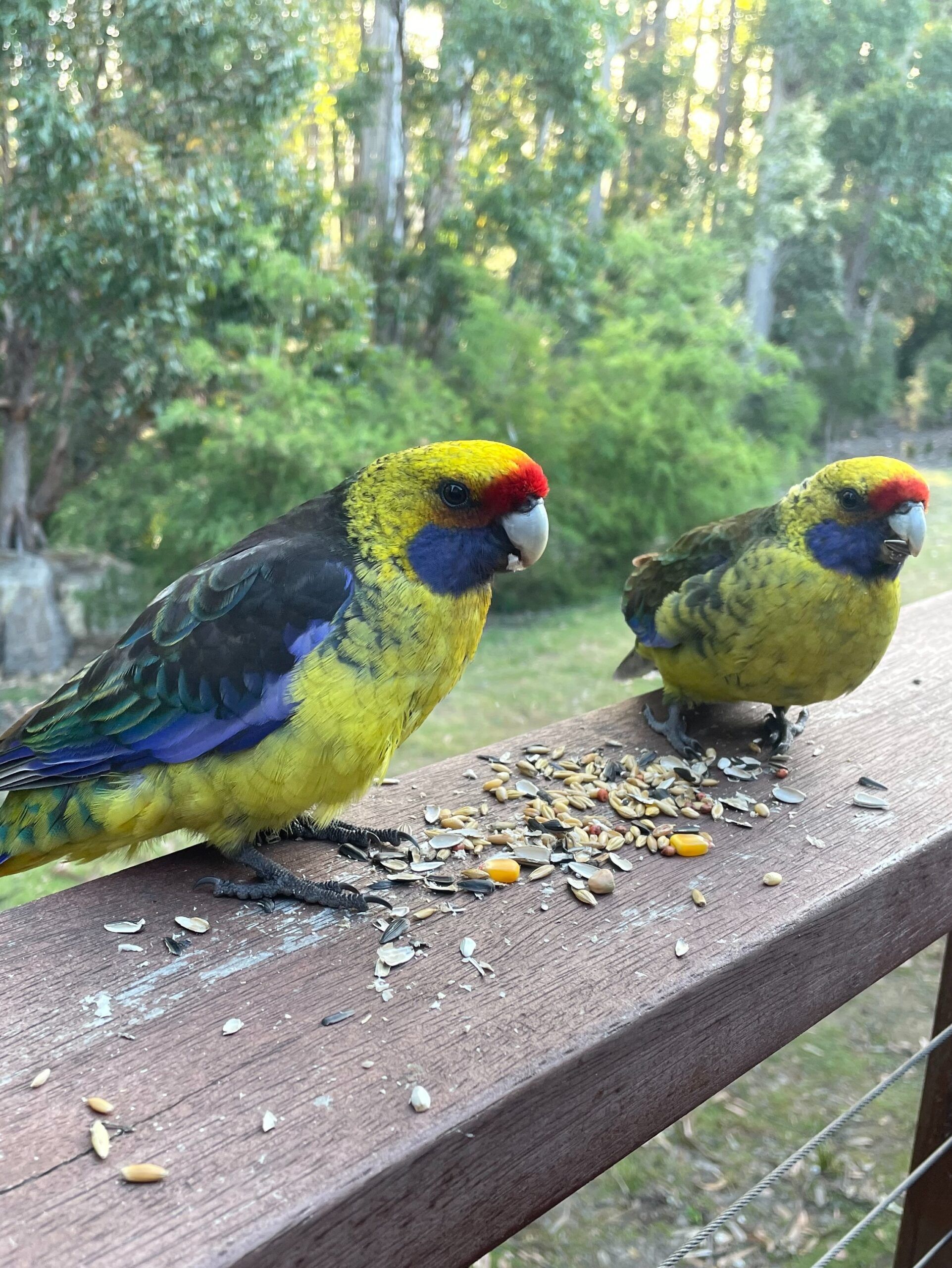
Let’s start off with the stunning green rosella, a species sometimes seen in aviculture despite not being quite as popular as some of its other rosella cousins. Its natural range sets this one apart: rather than Australia, it’s naturally found in Tasmania (and surrounding islands).
In this isolated island setting, the green rosella (or, appropriately, Tasmanian rosella) can be found pretty much everywhere. It pops up anywhere from sea level to the mountains, and likes hanging out in suburban gardens as much as it does in the native forests.
If you’d like to keep a green rosella as a pet, keep in mind that they’re apparently prone to becoming obese. Yours will need a large cage, plenty of time to fly around, and loads of toys to play with in order to keep it in good shape if you opt not to keep it in an aviary!
As you’ll see as we go through this list, all rosellas are known for being social, smart, and friendly. This one is no exception, so it can make a great pet if you can meet its needs.
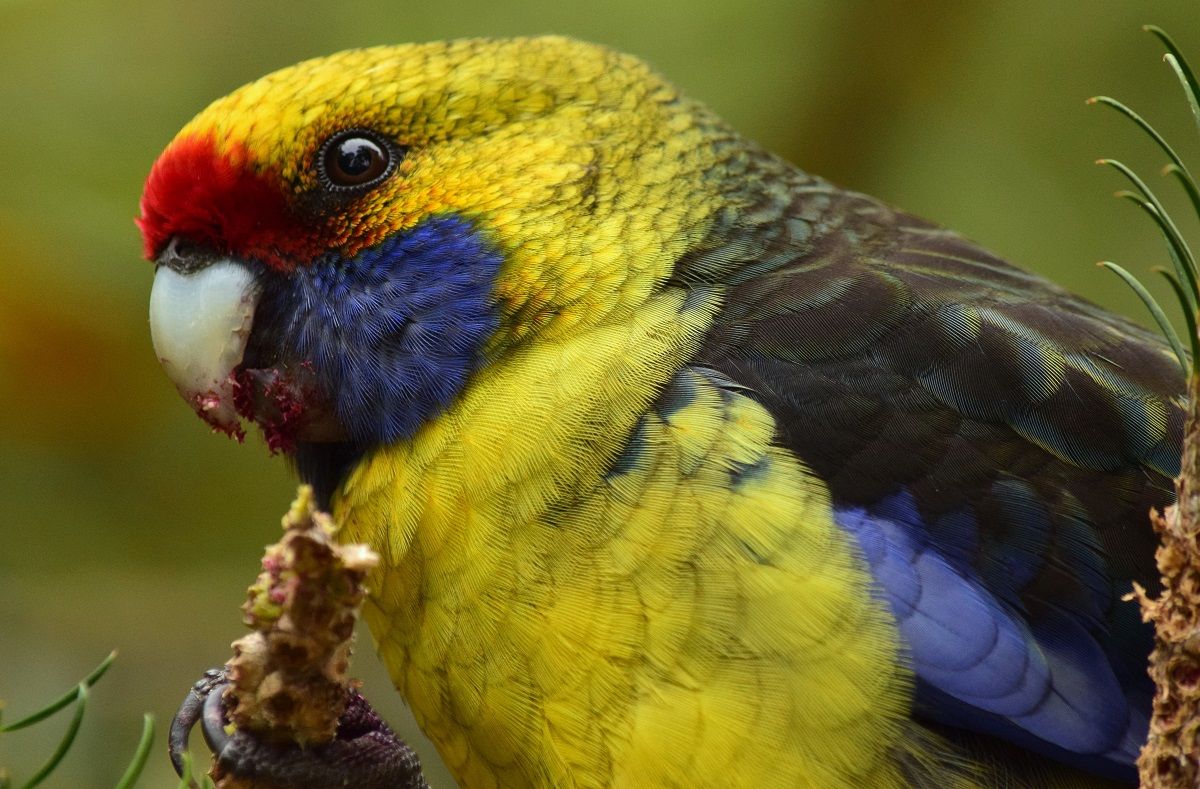
Green Rosella Parrot Profile | A Tasmanian Treasure
Most parrot enthusiasts are familiar with the eastern rosella and crimson rosella from Australia, but have you also heard of the green rosella (Platycercus caledonicus)? This Tasmanian native is beautifully …
Read moreCrimson rosella (Platycercus elegans)
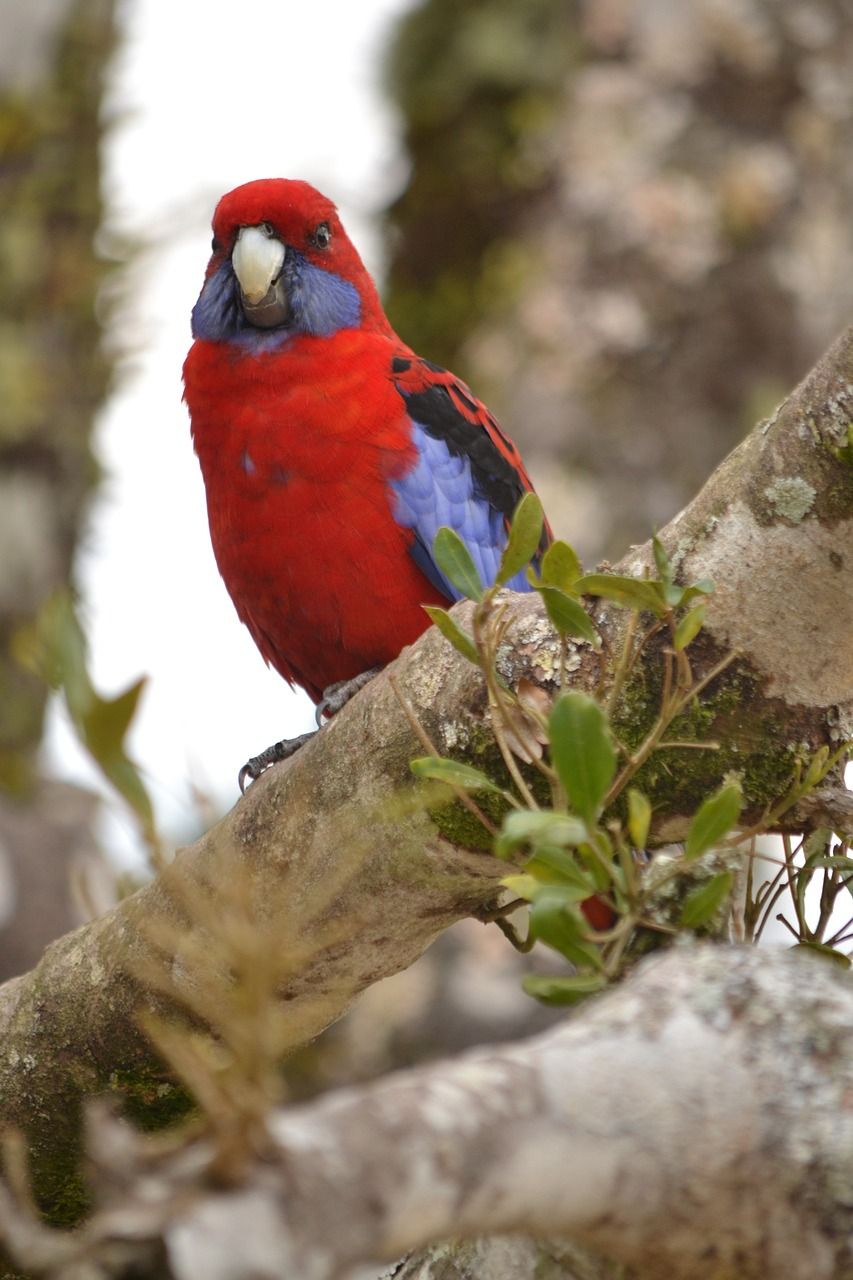
Another beautiful species is the crimson rosella, which can naturally be found in eastern and some of southern Australia. Here, they occur at any altitude, not caring much about habitat type as long as there are tree hollows to nest in. Anything from mountain forests to residential parks works for them!
This rosella has a whopping total of seven subspecies. Two of these were initially thought to be separate members of the genus Platycercus, but were later found to actually belong under the P. elegans denomination.
To make things nice and confusing, not all of the subspecies are actually crimson in color. One of them, Platycercus elegans flaveolus, is in fact commonly known as the yellow rosella! It looks a little like a yellow version of the aforementioned green rosella.
Crimson rosellas are probably the most popular in their genus as pets, mostly thanks to their spectacular colors. Like all types of rosellas, they’re more common in aviary settings. Still, they can make good house pets if you don’t mind a bird that isn’t overly cuddly.
Did you know? Rosella colors tend to change between the juvenile and adult stage. The crimson rosella, for example, is said to “ripen” with age, turning from mostly green to mostly red!
Eastern rosella (Platycercus eximius)

The second most popular rosella species in aviculture is the eastern rosella, another beautiful bird naturally found in southeastern Australia. It’s usually not seen in dense forests, but will pop up anywhere that’s lightly wooded: open forest, parks, gardens, and more.
There are three subspecies of eastern rosella, each with slightly different looks. Generally speaking, though, the species can be recognized by its red head and chest, yellow to green “vest”, and scalloped yellow-green and black back feathers. The females are a bit duller in color than the males.
Given its looks, it’s not a surprise this is the second most popular rosella to be kept as a pet. In fact, selective breeding has led to the creation of a bunch of new color varieties. I particularly like the “ino” versions, which lack colors other than red, yellow, and white.
Like other types of rosellas, this species can make a good pet. It’s not too loud, can be very sociable when properly tamed, and is usually eager to learn all sorts of tricks in return for its favorite treats.
Western rosella (Platycercus icterotis)
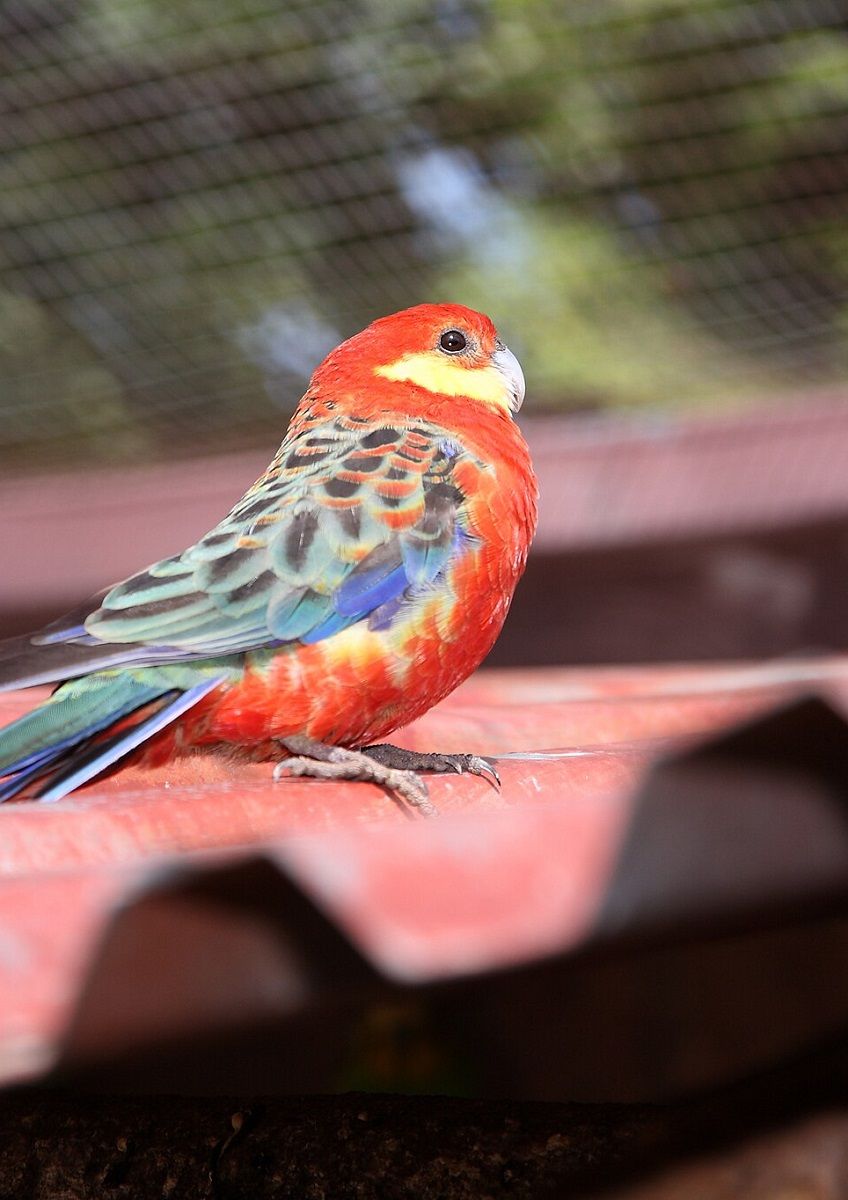
You’re not seeing double: the eastern and western rosella do look pretty similar! The difference is in the cheeks, which are stark white in the eastern species and yellow in its western counterpart.
As the name suggests, this species is found on the western end of Australia, specifically the southwest. At a maximum weight of around 80 grams it’s the smallest of all the rosellas. For comparison, the green rosella is the largest at a whopping 150 grams!
Like many of its cousins, the western rosella was long seen as a pest by farmers. Not surprising, given that common crops like maize, grains and fruits happen to fit perfectly into their diet! In fact, this species was once designated the status of “vermin”. Despite the IUCN listing it as Least Concern, the population still hasn’t recovered from this.
Although you may be able to find a breeder in dedicated hobbyist groups, western rosellas aren’t a species likely to pop up in your local pet store. They’re just not as popular, maybe because their colors are a bit more subdued than those of the other species.
Northern rosella (Platycercus venustus)
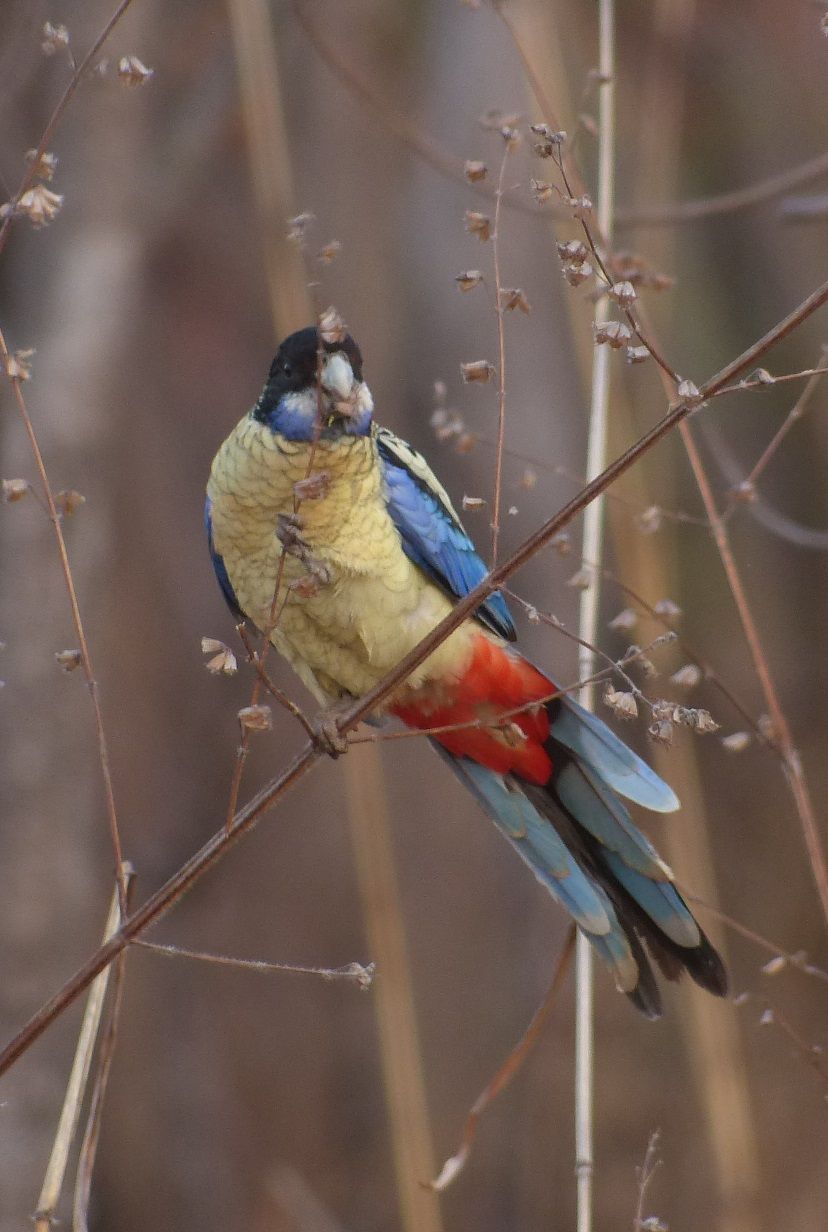
Now for something a little different! The northern rosella is the only species of Platycercus to sport a black head. Its cheeks can be fully white or partially blue depending on the subspecies, and it has a pale, yellowish-green belly. The undertail features a splash of bright red.
You’ve probably concluded by now that rosella common naming isn’t very creative, but at least it’s informative! This species is indeed found exclusively in northern Australia, where it mostly inhabits open woodland.
Like their western counterparts, northern rosellas aren’t all too common in aviculture. They’re very nice to look at, but it’s said they tend to be a little shyer than other rosellas and not quite as easy to hand-tame. They’re also supposed to be pickier eaters.
This being said, if you have previous experience with rosellas and manage to find someone who breeds northern rosellas, don’t let the above stop you. This beautiful species still has most of that typical rosella spunk, and an experienced parrot enthusiast shouldn’t have trouble keeping or breeding them.
Pale-headed rosella (Platycercus adscitus)
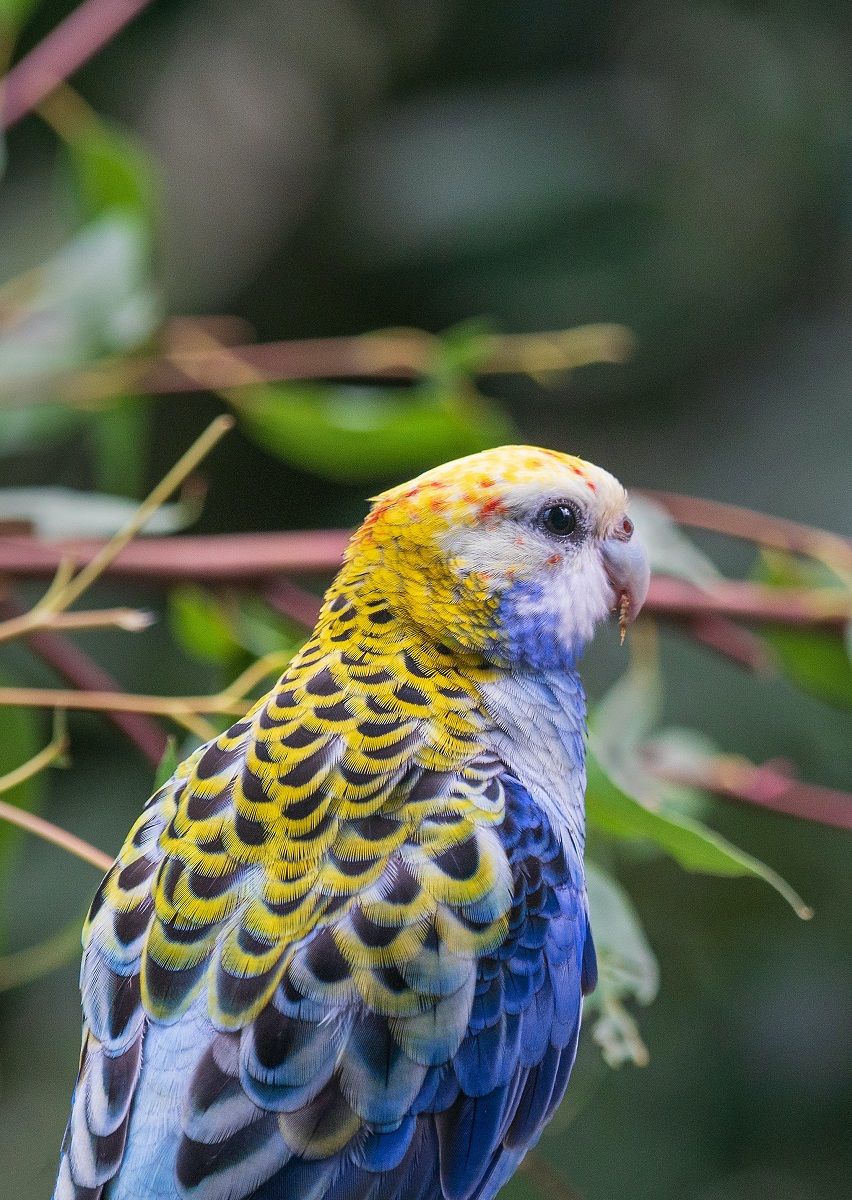
Let’s complete our colorful map around the margins of Australia with the pale-headed rosella, which naturally occurs in the country’s northeast. Here, like many of its cousins, it likes open woodland, farmland, and also more suburban settings.
Another beautifully colored species, this one can be told apart from the others by—what else could it be—its pale (white to yellowish-white) head. The belly and chest are blue, while the back of the head and top of the back are yellow and black with a scalloped pattern. The undertail is bright red.
This is also not a wildly popular pet bird, but if you’ve got contacts in the parrot world, it shouldn’t be impossible to find one. They’re a bit more common than northern rosellas, probably because they tend to be more outgoing in nature. And those gorgeous colors don’t hurt either!
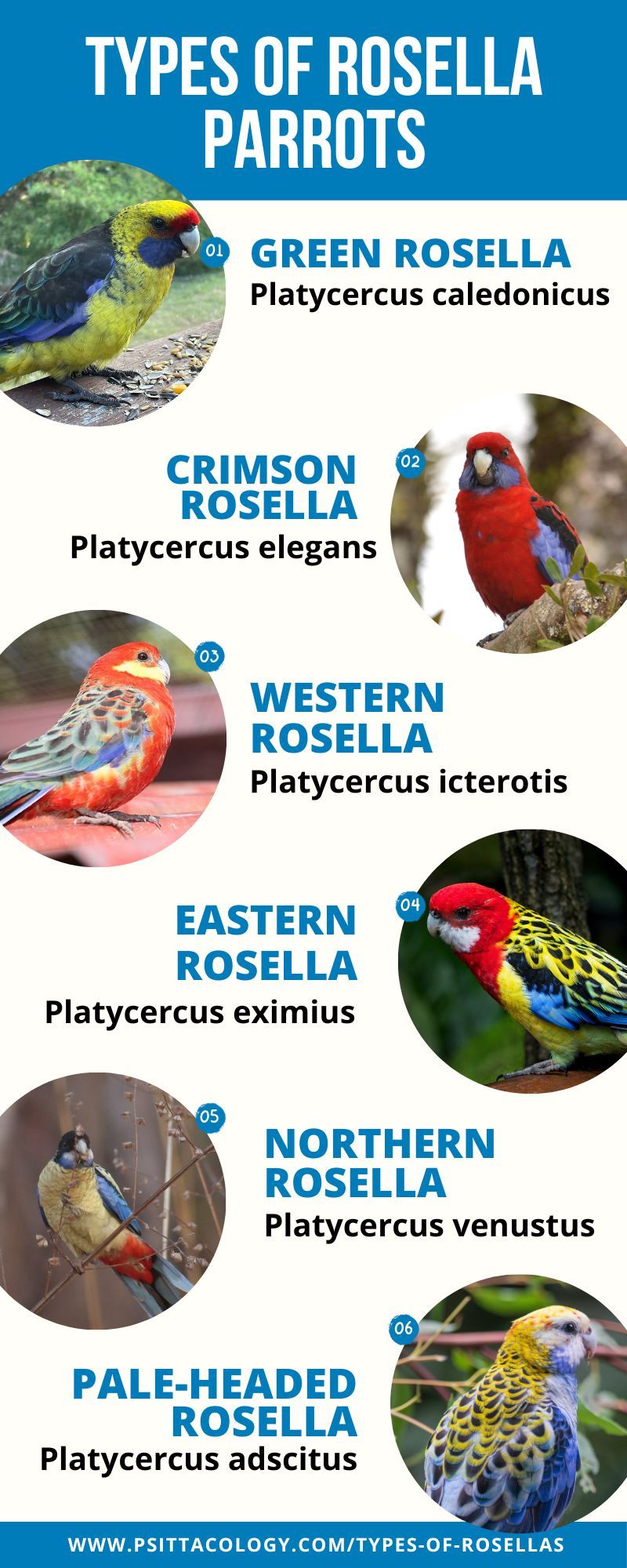
If you have any more questions about the different types of rosellas or if you’d like to share your own experiences with these colorful parrots, don’t hesitate to leave a comment below! Which is your favorite rosella?
Photo credits
Western rosella: Witold Grzesiek, CC BY-SA 4.0, via Wikimedia Commons, cropped
Northern rosella: Daviddic, CC BY-SA 4.0, via Wikimedia Commons, cropped
